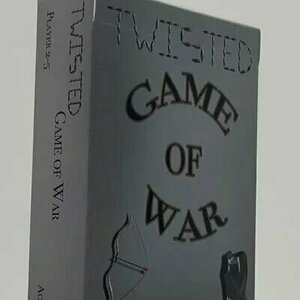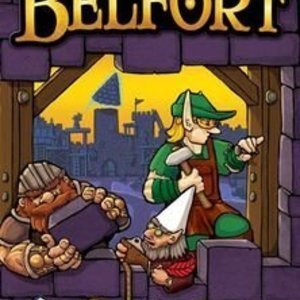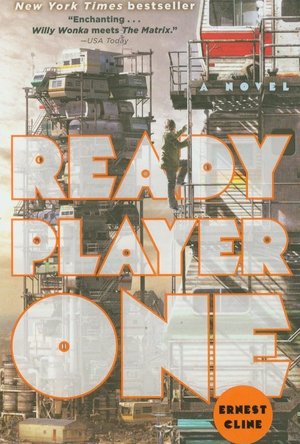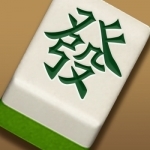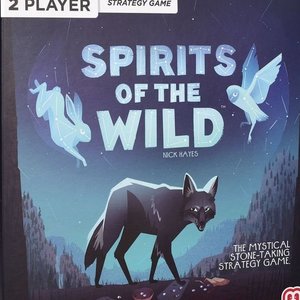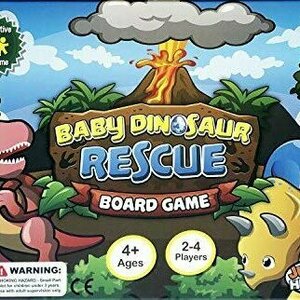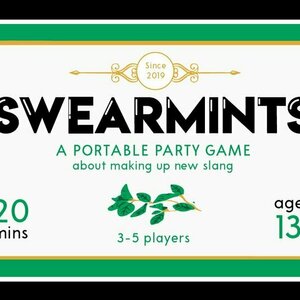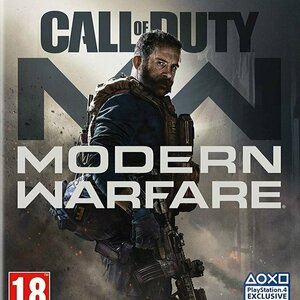Search
Search results
Purple Phoenix Games (2266 KP) rated Twisted Game of War in Tabletop Games
Jun 4, 2021
War. The card game nearly everyone knows how to play. You know, throw a card and your opponent throws a card and the highest number wins the played cards. First one to get all the cards wins. Yeah, there’s another rule, but that’s the gist. Well what if War got a small makeover? Would you be interested in checking it out? Let’s find out together!
In Twisted Game of War players take hold of their army and attempt to defeat their opponents by capturing and converting their entire army. The winner is the player who manages to collect all of the cards in the deck and hold every soldier.
DISCLAIMER: We were provided a copy of this game for the purposes of this review. This is a retail copy of the game, so what you see in these photos is exactly what would be received in your box. I do not intend to cover every single rule included in the rulebook, but will describe the overall game flow and major rule set so that our readers may get a sense of how the game plays. For more in depth rules, you may purchase a copy online or from your FLGS. -T
To setup give each player a reference card, shuffle the deck of remaining cards, and give each player an equal number of cards. The game may now begin!
On a turn each player will simultaneously blindly draw and play one card from the top of their deck to the table. The cards are compared and the winner of the hand is the card with the higher number value. In Twisted Game of War, however, in addition to gaining the played cards the winner will also consult the chart on the reverse of the reference card. This chart shows additional results based on which suit of card bested the other suit. Possible effects include: a random card from the loser’s deck, a bottom card, the top two cards, or even each card returning to its original owner’s deck. As the game progresses, one player will eventually out-duel their opponent to win the game!
Components. This is a deck of cards in a tuckbox. The cards are normal quality and feature a brown back and numbers with different suit on the fronts. Quality-wise everything is fine. Where I have issues is the artistic design choices made for the game. The suits all suggest medieval-esque weapons and armor, and all utilizing metal as primary materials (save for the bow). However, the card backs and logo for the game seem to feature stitching, as you might find in cloth materials. This mismatch does not affect gameplay at all, but made me do the doggy head-cock motion when I noticed it. Similarly, the cards are all, well, boring to look at. Yes, they give the proper elements that are needed: suit and number. And I suppose players aren’t really looking at them too much anyway, as it’s a slightly fancied-up War and cards are played and discarded almost immediately. In any case, I feel an area of opportunity lies with the aesthetic of the game cards.
All in all this is a decent idea pasted onto a “game” that really is not much fun to play anyway. War takes zero skill and has zero choices. Twisted Game of War plays the exact same way, but has the added bonus of at least DOING something on many hands. So I suppose there is merit to be found.
When all is said and done, I still cannot see this as a “game,” as I happen to define the term personally, but I can see value when playing with children. If used with children, the game introduces the “less than” and “greater than” concepts, and children do not need to be able to read in order to play with the suit effect chart, so long as an adult or older child is able to read the results.
When I am hankering for a good card game, I simply cannot suggest Twisted Game of War with typical adult gamers. However, if I need something that my kids can get into, I may be able to pull this out and help teach them simple math and chaos concepts. I like the idea of trying to improve overly-simple games, but I think a bit more care could have gone into production here and it would have elevated this game for me. If you are searching for such a game as this, please hop over to the publisher’s website at: Mental Eclipse Games and tell them Travis sent ya.
In Twisted Game of War players take hold of their army and attempt to defeat their opponents by capturing and converting their entire army. The winner is the player who manages to collect all of the cards in the deck and hold every soldier.
DISCLAIMER: We were provided a copy of this game for the purposes of this review. This is a retail copy of the game, so what you see in these photos is exactly what would be received in your box. I do not intend to cover every single rule included in the rulebook, but will describe the overall game flow and major rule set so that our readers may get a sense of how the game plays. For more in depth rules, you may purchase a copy online or from your FLGS. -T
To setup give each player a reference card, shuffle the deck of remaining cards, and give each player an equal number of cards. The game may now begin!
On a turn each player will simultaneously blindly draw and play one card from the top of their deck to the table. The cards are compared and the winner of the hand is the card with the higher number value. In Twisted Game of War, however, in addition to gaining the played cards the winner will also consult the chart on the reverse of the reference card. This chart shows additional results based on which suit of card bested the other suit. Possible effects include: a random card from the loser’s deck, a bottom card, the top two cards, or even each card returning to its original owner’s deck. As the game progresses, one player will eventually out-duel their opponent to win the game!
Components. This is a deck of cards in a tuckbox. The cards are normal quality and feature a brown back and numbers with different suit on the fronts. Quality-wise everything is fine. Where I have issues is the artistic design choices made for the game. The suits all suggest medieval-esque weapons and armor, and all utilizing metal as primary materials (save for the bow). However, the card backs and logo for the game seem to feature stitching, as you might find in cloth materials. This mismatch does not affect gameplay at all, but made me do the doggy head-cock motion when I noticed it. Similarly, the cards are all, well, boring to look at. Yes, they give the proper elements that are needed: suit and number. And I suppose players aren’t really looking at them too much anyway, as it’s a slightly fancied-up War and cards are played and discarded almost immediately. In any case, I feel an area of opportunity lies with the aesthetic of the game cards.
All in all this is a decent idea pasted onto a “game” that really is not much fun to play anyway. War takes zero skill and has zero choices. Twisted Game of War plays the exact same way, but has the added bonus of at least DOING something on many hands. So I suppose there is merit to be found.
When all is said and done, I still cannot see this as a “game,” as I happen to define the term personally, but I can see value when playing with children. If used with children, the game introduces the “less than” and “greater than” concepts, and children do not need to be able to read in order to play with the suit effect chart, so long as an adult or older child is able to read the results.
When I am hankering for a good card game, I simply cannot suggest Twisted Game of War with typical adult gamers. However, if I need something that my kids can get into, I may be able to pull this out and help teach them simple math and chaos concepts. I like the idea of trying to improve overly-simple games, but I think a bit more care could have gone into production here and it would have elevated this game for me. If you are searching for such a game as this, please hop over to the publisher’s website at: Mental Eclipse Games and tell them Travis sent ya.
Purple Phoenix Games (2266 KP) rated Belfort in Tabletop Games
Jun 10, 2021
I don’t know if I have ever just come out and said it before, but I love worker placement games. I just adore the mechanic and if a game includes it, the chances of me liking it are quite good. Belfort is an older game now (almost 10 years old!) so does it still excite and deliver the goods when so many other great worker placement games have been produced since it debuted?
The winner of Belfort is the player who, at the end of seven rounds of play, earns the most Victory Points (VP). Players will earn victory points by having majority of buildings claimed within the five districts of Belfort. To claim a building, players will be shrewdly sending workers to mines, the forest, and various buildings and guilds of Belfort to recruit more workers and earn the ever-important buck to finance these buildings.
Setup is kind of a beast, so I won’t detail everything here. Similarly, I will not be detailing every rule in the book, as there are just too many. But, I will give a general flow of the game so readers may be able to decide if this is a game they must add to their collections.
Once the game is setup and player order is established, each player will complete their entire turn in player order. Players will have many choices available to them on their turn: place workers on various buildings they had previously built, place workers on guild tiles to access powerful abilities, recruit more workers, hire gnomes to unlock certain portions of buildings, gaining more building plans, visiting the trading post to exchange resources, transform normal workers into master workers, and lastly assign workers to gather resources (wood, stone, metal, and gold) in the forests and mines surrounding Belfort.
At certain times during the game players will score their efforts to move up (and down) the VP track. It is at the end of the third and final scoring that the game ends and a victor is crowned.
While this is a very broad and general description of the rules of Belfort, each option listed contains layers of strategic depth that, like all good worker placement games, limits the players’ abilities to go everywhere they like as workers are in limited supply. For those gamers who have never played a worker placement game, this is both excruciating and delicious.
Components. This game boasts way too many components for the box in which is barely contained. I say this with one complete expansion and the promo set of guild tiles included, and the latest expansion on the way. All of the components in this game are stellar. The cards are great. All the cardboard play mats and tiles are great. The worker components and all the wooden bits are super great, AND I didn’t even mind having to sticker my own workers. The best part about the components in Belfort is definitely the art. The team designed an excellent art style for this one, and seeing little hidden jokes within the art makes it all that more interesting to me.
So DOES it hold up after all these years? I think it does. Though I would not consider Belfort an “easy” game to learn, teach, or play at first, after a few rounds players generally catch on and begin to really weigh all their options. This is a great game for think-hungry gamers. This game is conversely a bane for all AP-prone players. I fall right in the middle, but lean towards faster play at the expense of my final score. But that’s the beauty of Belfort and of all worker placement games: there are so many choices that one could easily just try to play so that they visit every location at least once. Now, by doing this the players are also ignoring the true goal of the game: area majority within the districts of Belfort, but if a player isn’t as aggressive or victory-crazed, that’s not a bad thing.
For me, I love Belfort. A lot. Unfortunately for me, during this crazy COVID time, I will not be able to play it much, and was lucky to be able to pull it out recently again after not playing it for several years. But, I always look upon the box fondly and wish I could just bust it out any time I want. Maybe someday someone will create solo rules for it and I can enjoy it that way. My wife is not a fan, but also she’s not really a fan of games that are longer than an hour generally. I cherish this game, and am quite happy to have it in my collection.
The winner of Belfort is the player who, at the end of seven rounds of play, earns the most Victory Points (VP). Players will earn victory points by having majority of buildings claimed within the five districts of Belfort. To claim a building, players will be shrewdly sending workers to mines, the forest, and various buildings and guilds of Belfort to recruit more workers and earn the ever-important buck to finance these buildings.
Setup is kind of a beast, so I won’t detail everything here. Similarly, I will not be detailing every rule in the book, as there are just too many. But, I will give a general flow of the game so readers may be able to decide if this is a game they must add to their collections.
Once the game is setup and player order is established, each player will complete their entire turn in player order. Players will have many choices available to them on their turn: place workers on various buildings they had previously built, place workers on guild tiles to access powerful abilities, recruit more workers, hire gnomes to unlock certain portions of buildings, gaining more building plans, visiting the trading post to exchange resources, transform normal workers into master workers, and lastly assign workers to gather resources (wood, stone, metal, and gold) in the forests and mines surrounding Belfort.
At certain times during the game players will score their efforts to move up (and down) the VP track. It is at the end of the third and final scoring that the game ends and a victor is crowned.
While this is a very broad and general description of the rules of Belfort, each option listed contains layers of strategic depth that, like all good worker placement games, limits the players’ abilities to go everywhere they like as workers are in limited supply. For those gamers who have never played a worker placement game, this is both excruciating and delicious.
Components. This game boasts way too many components for the box in which is barely contained. I say this with one complete expansion and the promo set of guild tiles included, and the latest expansion on the way. All of the components in this game are stellar. The cards are great. All the cardboard play mats and tiles are great. The worker components and all the wooden bits are super great, AND I didn’t even mind having to sticker my own workers. The best part about the components in Belfort is definitely the art. The team designed an excellent art style for this one, and seeing little hidden jokes within the art makes it all that more interesting to me.
So DOES it hold up after all these years? I think it does. Though I would not consider Belfort an “easy” game to learn, teach, or play at first, after a few rounds players generally catch on and begin to really weigh all their options. This is a great game for think-hungry gamers. This game is conversely a bane for all AP-prone players. I fall right in the middle, but lean towards faster play at the expense of my final score. But that’s the beauty of Belfort and of all worker placement games: there are so many choices that one could easily just try to play so that they visit every location at least once. Now, by doing this the players are also ignoring the true goal of the game: area majority within the districts of Belfort, but if a player isn’t as aggressive or victory-crazed, that’s not a bad thing.
For me, I love Belfort. A lot. Unfortunately for me, during this crazy COVID time, I will not be able to play it much, and was lucky to be able to pull it out recently again after not playing it for several years. But, I always look upon the box fondly and wish I could just bust it out any time I want. Maybe someday someone will create solo rules for it and I can enjoy it that way. My wife is not a fan, but also she’s not really a fan of games that are longer than an hour generally. I cherish this game, and am quite happy to have it in my collection.
Chris Byers (4 KP) rated Ready Player One in Books
Mar 14, 2018
Great action (3 more)
Cool references
Engaging
Solid detail and character development
Some anti-Christian sentiment (1 more)
What happens after the ending- would love follow up info
A Christian Review Of Ready Player One
I just finished another entertaining romp into the fictional realm with Ernest Cline's, Ready Player One. This was particularly engaging for a former/current video gamer like myself. It also provided a setting that I feel is a potentially realistic outcome of our current technology boom and humanist outlook in society.
The plot centers around Wade and the online game OASIS. The OASIS has expanded such that nearly everyone in society is constantly jacked into the system, neglecting real-life in favor of virtual fantasy and role playing. The OASIS gives users the ability to level up a character (Similar to an MMO like World of Warcraft), and interact virtually with other "Avatars."
The sad reality is that the real world has become a shell of its former self after multiple wars, and no one really seems to mind as they are constantly jacked into the fantasy world of the OASIS.
The OASIS creator dies and leaves his money (multi-billion) to whomever can solve a set of obscure puzzles built into the OASIS, all linked to 1980s trivia.
While it sounds odd on the surface, the first-person narration style gives the feel that you are actually a part of this new reality. The descriptions of the game and Avatar functions are well done.
Spiritually, just like the Hunger Games Trilogy, it is lacking. In what I am calling post-apocalypic humanism, the world is obviously very anti-religion/Christianity in this setting.
My theory would be that the humanistic views that are permeating our society currently eventually led to the decline in civilization as man was not accountable to anyone but himself, and the world suffered for it.
It is clear from the beginning that the protagonist, Wade, has never believed in God (though his friendly neighbor is described as a Christian who spends time logged into the OASIS at a virtual church, worshipping). The way that this is expressed comes across much like the way humanists and atheists of our day express it. With much distaste and an inferior view of God. God is compared to the Easter Bunny and other childhood fantasies, and the characters in the book do not seek any higher power. Still Wade is not an entirely unlikable character, even in light of his lack of faith, and this mindset is not prominently mentioned enough to detract from the book as a whole. Christians will likely feel pity for the characters whose mere existence has no meaning.
For Christians, we know that through our relationship with Christ, this life has meaning, and we have a purpose. There is no randomness, but rather a carefully orchestrated plan for each of us by a God who loves us and longs for us to be with him eternally.
A post-apocalypic world viewed through Christian eyes would be much less dystopian, so I imagine that is why authors in this category of fiction stray from God when possible. It adds to the bleak outlook of characters whose only purpose is living day to day, and trying to get along with one another.
I think Christians who read this type of literature should be aware that it is far from the truth that we know in Christ Jesus. When we see the world through only human eyes, and every man does what is right in his own eyes, we can only expect such a derelict society to be the result.
Ready Player One is an entertaining, albeit bleak story with solid detail and character development. Most Christians can skip this one, but for any gamers or fans of the 1980s out there it could provide a good fiction read.
Discussion Questions for Christians:
Does our society seem to be heading down a path that would lead to this type of world?
How would the worldview in the book be different if the main characters had a focus on Christ?
Can a protagonist that is not Christian, but a "decent guy" be a good role model for us?
Would living in a virtual world the majority of the time give us a distorted view of reality?
The plot centers around Wade and the online game OASIS. The OASIS has expanded such that nearly everyone in society is constantly jacked into the system, neglecting real-life in favor of virtual fantasy and role playing. The OASIS gives users the ability to level up a character (Similar to an MMO like World of Warcraft), and interact virtually with other "Avatars."
The sad reality is that the real world has become a shell of its former self after multiple wars, and no one really seems to mind as they are constantly jacked into the fantasy world of the OASIS.
The OASIS creator dies and leaves his money (multi-billion) to whomever can solve a set of obscure puzzles built into the OASIS, all linked to 1980s trivia.
While it sounds odd on the surface, the first-person narration style gives the feel that you are actually a part of this new reality. The descriptions of the game and Avatar functions are well done.
Spiritually, just like the Hunger Games Trilogy, it is lacking. In what I am calling post-apocalypic humanism, the world is obviously very anti-religion/Christianity in this setting.
My theory would be that the humanistic views that are permeating our society currently eventually led to the decline in civilization as man was not accountable to anyone but himself, and the world suffered for it.
It is clear from the beginning that the protagonist, Wade, has never believed in God (though his friendly neighbor is described as a Christian who spends time logged into the OASIS at a virtual church, worshipping). The way that this is expressed comes across much like the way humanists and atheists of our day express it. With much distaste and an inferior view of God. God is compared to the Easter Bunny and other childhood fantasies, and the characters in the book do not seek any higher power. Still Wade is not an entirely unlikable character, even in light of his lack of faith, and this mindset is not prominently mentioned enough to detract from the book as a whole. Christians will likely feel pity for the characters whose mere existence has no meaning.
For Christians, we know that through our relationship with Christ, this life has meaning, and we have a purpose. There is no randomness, but rather a carefully orchestrated plan for each of us by a God who loves us and longs for us to be with him eternally.
A post-apocalypic world viewed through Christian eyes would be much less dystopian, so I imagine that is why authors in this category of fiction stray from God when possible. It adds to the bleak outlook of characters whose only purpose is living day to day, and trying to get along with one another.
I think Christians who read this type of literature should be aware that it is far from the truth that we know in Christ Jesus. When we see the world through only human eyes, and every man does what is right in his own eyes, we can only expect such a derelict society to be the result.
Ready Player One is an entertaining, albeit bleak story with solid detail and character development. Most Christians can skip this one, but for any gamers or fans of the 1980s out there it could provide a good fiction read.
Discussion Questions for Christians:
Does our society seem to be heading down a path that would lead to this type of world?
How would the worldview in the book be different if the main characters had a focus on Christ?
Can a protagonist that is not Christian, but a "decent guy" be a good role model for us?
Would living in a virtual world the majority of the time give us a distorted view of reality?
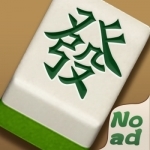
mahjong 13 tiles · no ad
Games and Entertainment
App
No ad version of the "Mahjong 13 tiles".Reduces the AI difficulty, this will lead to better game...
Purple Phoenix Games (2266 KP) rated Spirits of the Wild in Tabletop Games
Aug 15, 2019
You know how some games just look… delicious? Take Azul’s tiles that remind us of a yummy burst of sugary goodness. Or all the cutie little bits in Everdell. Well, the components in this game are really stellar and are just a joy to play with. Yes, I am jumping the gun with the formula I typically use for my reviews, but just scroll down for a sec and check out the play photo. Just those juicy little stones, the awesome bowl, the nice little coyote mini. They’re great! Anyway, having great components doesn’t necessarily mean that the game will be good. Add to that the fact that I picked this up from Target AND it’s published by Mattel and I really wasn’t expecting much from Spirits of the Wild. I’ll admit I was wrong. This is a great game. This is why –
This is a game about resource management, set collection and a hint of take that. The winner of the game is the player who can most efficiently use the stones they choose from the bowl during the game by assigning them to areas on their player mat. Each area scores points differently, and the game ends at the end of the player’s turn once at least five clear stones have left the provided bag. Let me explain.
DISCLAIMER: I do not intend to cover every single rule included in the rule book, but will describe the overall game flow and major rule set so that our readers may get a sense of how the game plays. For more in depth rules, you may purchase a copy from the publisher directly, from Target, or from your FLGS. -T
To setup the game, place all the stones in the bag. Place the bowl in the middle of the players, and set aside the coyote mini. Place the two stacks of Spirit Cards in the middle of the table. Each player receives a play mat and the same set of cards that indicates an action that can be taken on a turn. Draw out four stones from the bag and place them in the bowl. You are ready to begin.
On a player’s turn, they choose a face up card from the collection in front of them which tells them what to do on their turn. Such actions include take a stone, take two stones, or place some stones in the bowl and take one. Once an action card has been chosen and followed, the player flips it over and it cannot be used on the next turn. One card that can be used at any time instructs the player to take a Spirit Card action and refresh their cards by flipping them all face-up. The cards drive the actions to be made throughout the game, but the game really hinges on the stones and the coyote.
When you take actions to choose stones from the bowl you then have to assign those stones to spots on your play mat. These areas score differently and deciding which stones to grab and where to place them can be agonizing, but only because you can see what your opponent is doing and you really need to set yourself up to score points before the game suddenly has to end and you are stuck unfinished and will be unscoring. Unscoring? You’re welcome, Webster’s Dictionary. The coyote, when placed on an opponent’s play mat prevents stones from being added to that area and can really throw an ACME wrench into your plans. So determining when to move the coyote from your mat onto your opponent’s may really be the difference between sweet, tasty victory and bitter, yucky defeat. Again, play continues until the end of the turn when the fifth clear stone leaves the bag. Oh those clear ones? When placed, you can no longer place stones in that area but will also double that area’s score at the end of the game. So there’s quite a bit going on in your head throughout the game. Delicious!
Components. Well, I kinda already professed my love for them in the intro, so I’ll do it again here. They are wonderful components! I want to just be fidgeting with them all the time.
So is this good? Verily!! The constant struggle between deciding your action card based on the stones in the bowl or refreshing your cards or just going for broke and taking a chance on unscoring an area because there are already three clear stones out but you know at any time three more can make an appearance and end the game is just so satisfying. The components are amazing, the game play is fast and furious (not a sponsor), and you just want to play it again right afterward. Those are my favorite kind of games. If this all sounds like your kind of game, definitely check it out. You won’t be disappointed. I believe anyone would like this one. Purple Phoenix Games gives this one an enthusiastic, but temptation-to-eat-the-stones-resisting 10 / 12.
This is a game about resource management, set collection and a hint of take that. The winner of the game is the player who can most efficiently use the stones they choose from the bowl during the game by assigning them to areas on their player mat. Each area scores points differently, and the game ends at the end of the player’s turn once at least five clear stones have left the provided bag. Let me explain.
DISCLAIMER: I do not intend to cover every single rule included in the rule book, but will describe the overall game flow and major rule set so that our readers may get a sense of how the game plays. For more in depth rules, you may purchase a copy from the publisher directly, from Target, or from your FLGS. -T
To setup the game, place all the stones in the bag. Place the bowl in the middle of the players, and set aside the coyote mini. Place the two stacks of Spirit Cards in the middle of the table. Each player receives a play mat and the same set of cards that indicates an action that can be taken on a turn. Draw out four stones from the bag and place them in the bowl. You are ready to begin.
On a player’s turn, they choose a face up card from the collection in front of them which tells them what to do on their turn. Such actions include take a stone, take two stones, or place some stones in the bowl and take one. Once an action card has been chosen and followed, the player flips it over and it cannot be used on the next turn. One card that can be used at any time instructs the player to take a Spirit Card action and refresh their cards by flipping them all face-up. The cards drive the actions to be made throughout the game, but the game really hinges on the stones and the coyote.
When you take actions to choose stones from the bowl you then have to assign those stones to spots on your play mat. These areas score differently and deciding which stones to grab and where to place them can be agonizing, but only because you can see what your opponent is doing and you really need to set yourself up to score points before the game suddenly has to end and you are stuck unfinished and will be unscoring. Unscoring? You’re welcome, Webster’s Dictionary. The coyote, when placed on an opponent’s play mat prevents stones from being added to that area and can really throw an ACME wrench into your plans. So determining when to move the coyote from your mat onto your opponent’s may really be the difference between sweet, tasty victory and bitter, yucky defeat. Again, play continues until the end of the turn when the fifth clear stone leaves the bag. Oh those clear ones? When placed, you can no longer place stones in that area but will also double that area’s score at the end of the game. So there’s quite a bit going on in your head throughout the game. Delicious!
Components. Well, I kinda already professed my love for them in the intro, so I’ll do it again here. They are wonderful components! I want to just be fidgeting with them all the time.
So is this good? Verily!! The constant struggle between deciding your action card based on the stones in the bowl or refreshing your cards or just going for broke and taking a chance on unscoring an area because there are already three clear stones out but you know at any time three more can make an appearance and end the game is just so satisfying. The components are amazing, the game play is fast and furious (not a sponsor), and you just want to play it again right afterward. Those are my favorite kind of games. If this all sounds like your kind of game, definitely check it out. You won’t be disappointed. I believe anyone would like this one. Purple Phoenix Games gives this one an enthusiastic, but temptation-to-eat-the-stones-resisting 10 / 12.
Purple Phoenix Games (2266 KP) rated Baby Dinosaur Rescue in Tabletop Games
Apr 21, 2021
The Kids Table series from Purple Phoenix Games seeks to lightly explore games that are focused toward children and families. We will do our best to give some good insight, but not bog you down with a million rules.
The island’s volcano is about to erupt! We HAVE to get these baby dinosaurs to safety FAST! Place the game board on the table with the lava tracker token on the highest lava spot. Depending on how challenging you want your game, place all your dinosaur tokens at the bottom of the board ready to move to safety. Shuffle the cards and deal each player three. You are ready to truck it to the safety of a neighboring island.
On your turn you will play a card from your hand and move any dinosaur to the next-closest open spot that matches the card you played. So if you play that Fish Bone card, move one dino to the first Fish Bone spot on the board you see. Draw another card and it’s the next player’s turn. Do they also have a Fish Bone? Great, play it now because the next-closest open Fish Bone spot is the one PAST where you last placed a dino moving them even further ahead!
Uh oh, have a Lava card in your hand? You HAVE to play that first. When a Lava card is played, no dinosaurs move, but the Lava token moves down one spot closer to obliterating the island!
Play continues in this fashion of playing cards and hopefully leap-frogging dinos to move further ahead on the path to safety. Players are playing cooperatively, so either everyone wins when all the dinos get to the other island, or everyone loses because the island has been burninated.
Components. Any game with a trumpet-playing character already has great components. But, the board and chips are good sturdy quality, and the cards are as well. If you find that you will be playing this one quite a bit I would suggest sleeving the cards as they are handled a lot during play.
We love this game and my son requests it more than any other game we own. It is simple, fun, and tense at times! What we love about this game as parents is that it teaches children about cooperative gaming. No dinosaurs are owned in the game – everyone is trying to save ALL the dinos, not just “THEIR” dino. It also teaches that sometimes you have Lava cards and are unable to help the team, and that’s okay because another player will pick up that slack and make the team better. Gotta love educational games with great themes! Pick it up online as I haven’t seen it in stores anywhere.
The island’s volcano is about to erupt! We HAVE to get these baby dinosaurs to safety FAST! Place the game board on the table with the lava tracker token on the highest lava spot. Depending on how challenging you want your game, place all your dinosaur tokens at the bottom of the board ready to move to safety. Shuffle the cards and deal each player three. You are ready to truck it to the safety of a neighboring island.
On your turn you will play a card from your hand and move any dinosaur to the next-closest open spot that matches the card you played. So if you play that Fish Bone card, move one dino to the first Fish Bone spot on the board you see. Draw another card and it’s the next player’s turn. Do they also have a Fish Bone? Great, play it now because the next-closest open Fish Bone spot is the one PAST where you last placed a dino moving them even further ahead!
Uh oh, have a Lava card in your hand? You HAVE to play that first. When a Lava card is played, no dinosaurs move, but the Lava token moves down one spot closer to obliterating the island!
Play continues in this fashion of playing cards and hopefully leap-frogging dinos to move further ahead on the path to safety. Players are playing cooperatively, so either everyone wins when all the dinos get to the other island, or everyone loses because the island has been burninated.
Components. Any game with a trumpet-playing character already has great components. But, the board and chips are good sturdy quality, and the cards are as well. If you find that you will be playing this one quite a bit I would suggest sleeving the cards as they are handled a lot during play.
We love this game and my son requests it more than any other game we own. It is simple, fun, and tense at times! What we love about this game as parents is that it teaches children about cooperative gaming. No dinosaurs are owned in the game – everyone is trying to save ALL the dinos, not just “THEIR” dino. It also teaches that sometimes you have Lava cards and are unable to help the team, and that’s okay because another player will pick up that slack and make the team better. Gotta love educational games with great themes! Pick it up online as I haven’t seen it in stores anywhere.
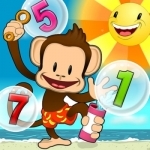
Monkey Math School Sunshine
Education and Games
App
From the creators of the #1 Preschool App “Monkey Preschool Lunchbox”! Join your child’s...
Purple Phoenix Games (2266 KP) rated Swearmints in Tabletop Games
Feb 5, 2021
You know how sometimes you happen to make up a new slang for something and maybe even once or twice it has caught on? At least locally. Well I do not think many of mine have gone anywhere, but now is my chance to make a name for myself as the slang-king in this little mint tin game.
Swearmints is a small card game of voting for the best explanations of silly combination new-slang. The gameplay is familiar but the hilarity is all new.
DISCLAIMER: We were provided a prototype copy of this game for the purposes of this review. These are preview copy components, and I do not know for sure if the final components will be any different from these shown. You are invited to download the rulebook, back the game through the Kickstarter campaign launching March 9, 2021, or through any retailers stocking it after fulfillment. -T
To setup choose a Mint Master (the first dealer) and give them the mint tin with the mint cubes inside. Shuffle the cards to create a draw pile. The Mint Master will then deal each player two cards and the game may begin!
During a round each player will consult their two cards, choosing a word from each, and combining the words to make a new phrase. The cards have four words printed on each side so players will have access to 16 total words. Once all players have chosen their new term they will go around the table introducing and explaining their new slang term to the Mint Master. As all players have finished the Mint Master will choose their favorite new term by awarding one mint cube to the winning player. Players may also earn bonus mint cubes for using two alliterative words, and another mint cube for using two rhyming words. A new Mint Master is then crowned around the table and they thusly deal two cards to the players to begin a new round.
Play continues in this fashion until the tin runs out of mint cubes. The player with the most mint cubes is the winner!
Components. This game is a bunch of cards and green translucent cubes in a mint tin. The cards are fine and double-sided. The cubes are also fine. There is no art to speak of in the game, and no theme. So from me, even if this were the final version (which again, I am not sure) the components are all fine and no complaints from me.
The game is obviously a new variation of the Apples to Apples mechanic where one player is the judge and awards the winner with their opinions. This is tried and true and works for so many games. I feel it also works here. This is not at all a difficult game to learn, teach, or play. In fact, I played a very G-rated game of it with my 4-year-old son and he absolutely loved it. Of course, I had to choose appropriate words for him to use, but he technically played the game and played it well.
Swearmints is a small game that can easily fit in a pocket or backpack and be enjoyed by almost all people in all scenarios. Need something to play with Gramps and Grammie over the weekend? Swearmints. Need something to warmup game night with new players to open them up some? Swearmints. Need an icebreaker at work (once work resumes in-person)? Swearmints. There are so many scenarios I can see this being very successful to have on hand and it can be played very innocently or very inappropriately, depending on present company. That’s what makes this a great new spin on the A2A gameplay: its adaptability and portability.
If you are like me, you could always use a little package of excitement in your pocket. Wait. I mean, you could appreciate toting around a small and unassuming little game that can fit many gaming opportunities as they arise. Should you be looking for that little firecracker, then consider backing Swearmints on Kickstarter when the campaign launches in March. You never know when you might need to break it out to ease the tension in the room or to initiate a muggle into the gaming world.
Swearmints is a small card game of voting for the best explanations of silly combination new-slang. The gameplay is familiar but the hilarity is all new.
DISCLAIMER: We were provided a prototype copy of this game for the purposes of this review. These are preview copy components, and I do not know for sure if the final components will be any different from these shown. You are invited to download the rulebook, back the game through the Kickstarter campaign launching March 9, 2021, or through any retailers stocking it after fulfillment. -T
To setup choose a Mint Master (the first dealer) and give them the mint tin with the mint cubes inside. Shuffle the cards to create a draw pile. The Mint Master will then deal each player two cards and the game may begin!
During a round each player will consult their two cards, choosing a word from each, and combining the words to make a new phrase. The cards have four words printed on each side so players will have access to 16 total words. Once all players have chosen their new term they will go around the table introducing and explaining their new slang term to the Mint Master. As all players have finished the Mint Master will choose their favorite new term by awarding one mint cube to the winning player. Players may also earn bonus mint cubes for using two alliterative words, and another mint cube for using two rhyming words. A new Mint Master is then crowned around the table and they thusly deal two cards to the players to begin a new round.
Play continues in this fashion until the tin runs out of mint cubes. The player with the most mint cubes is the winner!
Components. This game is a bunch of cards and green translucent cubes in a mint tin. The cards are fine and double-sided. The cubes are also fine. There is no art to speak of in the game, and no theme. So from me, even if this were the final version (which again, I am not sure) the components are all fine and no complaints from me.
The game is obviously a new variation of the Apples to Apples mechanic where one player is the judge and awards the winner with their opinions. This is tried and true and works for so many games. I feel it also works here. This is not at all a difficult game to learn, teach, or play. In fact, I played a very G-rated game of it with my 4-year-old son and he absolutely loved it. Of course, I had to choose appropriate words for him to use, but he technically played the game and played it well.
Swearmints is a small game that can easily fit in a pocket or backpack and be enjoyed by almost all people in all scenarios. Need something to play with Gramps and Grammie over the weekend? Swearmints. Need something to warmup game night with new players to open them up some? Swearmints. Need an icebreaker at work (once work resumes in-person)? Swearmints. There are so many scenarios I can see this being very successful to have on hand and it can be played very innocently or very inappropriately, depending on present company. That’s what makes this a great new spin on the A2A gameplay: its adaptability and portability.
If you are like me, you could always use a little package of excitement in your pocket. Wait. I mean, you could appreciate toting around a small and unassuming little game that can fit many gaming opportunities as they arise. Should you be looking for that little firecracker, then consider backing Swearmints on Kickstarter when the campaign launches in March. You never know when you might need to break it out to ease the tension in the room or to initiate a muggle into the gaming world.
Gareth von Kallenbach (980 KP) rated Call of Duty: Modern Warfare in Video Games
Dec 2, 2019
Call of Duty is back and better than ever with the release of Call of Duty: Modern Warfare. The game serves as a reboot of the Modern Warfare series and features the return of a single player campaign that was sadly missing from last year’s Call of Duty: Black Ops IIII.
The campaign is ripped from the headlines as it has a more plausible storyline with the discovery of Poison Gas that is threatening instability in the Middle East and abroad and forces the players to make very tough decisions along the way.
Playing the missions as one of several characters helps give the game a wide-ranging perspective as it is not all run and gun action as there is also stealth and tactical stages of the game.
What I really enjoyed was the updated graphical engine that not only produced some amazing visuals but really gave a new level of intensity to the game which is a non-stop thrill ride that rivals anything Hollywood can offer.
While the game has some issues at launch; they were patched up and future updates such as maps are not only free this time around but frequent.
The Multiplayer aspect of the game is always a big draw and this time around Modern Warfare really shines by featuring Cross-Play which allows Xbox One, Playstation 4, and a PC player to play in the same game and also allows players greater options in finding games to take part in.
Multiplayer Modes will be very familiar to anyone who has played any of the games in the series as the Team Death Match, Kill Confirmed, Hardpoint, and other modes are back which combine with the other modes to offer ten different options for players.
As before players will gain points as they play which will allow them to unlock new weapons, equipment, Kill Streaks, Perks, cosmetics and other options to enhance the experience and allow players to pick loadouts that best suit their style of play.
Moving away from the Battle Royale mode that was introduced last year; Modern Warfare offers a mode called Ground War which allows large groups of players to battle one another in a large map complete with vehicles such as tanks and helicopters. I can tell you that there is no greater joy than hopping in a tank to obliterate a person who has been camping and sniping your entire squad for most of the mission.
Perhaps the most interesting new feature of the game is a series of Co-Op modes. This option allows players to join with other players to complete missions; some of which extend the storyline to the game as they must work with one another to complete various missions.
The sales for the game have been very strong as it brought in over $600 million in revenue in just three days. Once the technical issues I faced were eliminated and my gameplay stabilized; I have found this to be easily one of the most enjoyable recent games in the series and one of the best overall.
I cannot wait to see what they do next as Call of Duty: Modern Warfare is a great new addition to the series that blends old and new with a gripping story and relentless action.
4.5 stars out of 5
The campaign is ripped from the headlines as it has a more plausible storyline with the discovery of Poison Gas that is threatening instability in the Middle East and abroad and forces the players to make very tough decisions along the way.
Playing the missions as one of several characters helps give the game a wide-ranging perspective as it is not all run and gun action as there is also stealth and tactical stages of the game.
What I really enjoyed was the updated graphical engine that not only produced some amazing visuals but really gave a new level of intensity to the game which is a non-stop thrill ride that rivals anything Hollywood can offer.
While the game has some issues at launch; they were patched up and future updates such as maps are not only free this time around but frequent.
The Multiplayer aspect of the game is always a big draw and this time around Modern Warfare really shines by featuring Cross-Play which allows Xbox One, Playstation 4, and a PC player to play in the same game and also allows players greater options in finding games to take part in.
Multiplayer Modes will be very familiar to anyone who has played any of the games in the series as the Team Death Match, Kill Confirmed, Hardpoint, and other modes are back which combine with the other modes to offer ten different options for players.
As before players will gain points as they play which will allow them to unlock new weapons, equipment, Kill Streaks, Perks, cosmetics and other options to enhance the experience and allow players to pick loadouts that best suit their style of play.
Moving away from the Battle Royale mode that was introduced last year; Modern Warfare offers a mode called Ground War which allows large groups of players to battle one another in a large map complete with vehicles such as tanks and helicopters. I can tell you that there is no greater joy than hopping in a tank to obliterate a person who has been camping and sniping your entire squad for most of the mission.
Perhaps the most interesting new feature of the game is a series of Co-Op modes. This option allows players to join with other players to complete missions; some of which extend the storyline to the game as they must work with one another to complete various missions.
The sales for the game have been very strong as it brought in over $600 million in revenue in just three days. Once the technical issues I faced were eliminated and my gameplay stabilized; I have found this to be easily one of the most enjoyable recent games in the series and one of the best overall.
I cannot wait to see what they do next as Call of Duty: Modern Warfare is a great new addition to the series that blends old and new with a gripping story and relentless action.
4.5 stars out of 5
